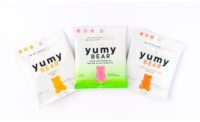![]()
Meeting Customer’s Expectations
By Ann Przybyla Wilkes
SFA V.P. of Communications
If food marketers want to build a leadership brand in-store, they need to begin by understanding the self-select environment, advised Jerome Kathman, president and CEO, LPK (Libby Perszyk Kathman Inc.). Speaking at The POP Show, sponsored by the In-Store Marketing Institute, Sept. 22-23 in Chicago, Kathman explained that brand managers must focus on the changing consumer.
Although the emergence of the self-serving selling environment was a major change that took place about 100 years ago, today we have achieved “death by SKU” with more than 39,000 SKUs in an average supermarket, said Kathman. However, self-selection is appealing, he explained, adding that it saves money for both the store and customers, and it gives customers control, making it a win-win system.
Kathman stressed that 76% of brand purchases are driven by impulse, and snack and other manufacturers have two seconds to get consumers’ attention. He gave four strategies for building leadership brands in-store:
Innovate — Either the leading brand innovates or an upstart joins the competition and reinvents the shelf set. Bringing new ideas to a brand builds leadership.
Connect Emotionally — Constantly talk to shoppers, monitor their in-store experiences, and understand the unique mindset they bring to each channel.
Articulate and Inculcate the Brand Strategy — This is more than implementation of in-store marketing and promotional plans. By understanding the foundation and the character of the brand and then creating robust designs in-store, brands maintain their leadership position.
Leverage the Design Franchise — Understand the essential role of design equity in our image-based culture.
Anticipate Customer’s Expectations
The need to constantly talk to shoppers also was strongly recommended by Wal-Mart executive V.P. of marketing and consumer communications Bob Connolly. He said that suppliers need to be familiar with the calendar and anticipate customers’ expectations if they want to do business with Wal-Mart. As an example, described an end display in a Wal-Mart in the South that featured candles when the weather was 100o F outside. None of the candles were sold in the four weeks that the display was up. The display should have included fans, iced tea or at least candles that repel bugs, Connolly emphasized.
Wal-Mart did not efficiently execute tie-ins with March Madness this year, said Connolly. That left an opportunity for Wal-Mart’s suppliers to suggest promotions that focused on the NCAA basketball tournament. However, in response to a question on customer-supplied graphics for such a promotion, he responded, “If a graphic only promotes your brand, we probably won’t like it.”
Besides low, everyday prices, other suggestions on how brand managers can get their product in Wal-Mart included convenience and clear instructions on the labels. “We like to be the leader in new products,” he added.
The Next Great Generation
Arthur Mitchell, executive vice president and director of strategic planning for Campbell-Ewald, focused on marketing to a specific segment of the population: Generation Y’ers. This group includes those born between 1976 and 1994, or those aged 10 to 28. Describing this group, Mitchell pointed out that they are not a younger version of Generation X’ers.
Generation Y’ers have been surrounded by media since birth, but they don’t try to escape it like the baby boomers do. The media is comforting to them, with
television being the new radio by serving as background noise. They selectively pay attention to both programs and advertising. They want information, and the more, the better. Brand managers that want to reach Gen Y’ers should use all forms of the media, especially the Web.
Eighty-five percent of Gen Y’s think it’s important for companies to make corporate contributions to charities. Tolerance of others and their views is one of the defining factors of this generation. Yet, they can (and will) check to see if marketers are telling them the truth. Authenticity has become a part of their value system. The accompanying chart compares the traits of Generation Y’ers to other groups.
With all generations, time is the new currency. Whether building or maintaining a leadership brand, achieving a business relationship with Wal-Mart or other retailers, or reaching out to a particular segment of the population, brand managers need to meet expectations of consumers that they had not previously considered.
As always, we welcome your comments and ideas for future “Up and Down the Street” columns. Please send them to SFA’s Vice President of Communications Ann Wilkes at awilkes@sfa.org or call her at 703.836.4500 ext. 204.
| Generation Personal | ||
| Boomers | Generation X | Millennials (Generation Y) |
|
Idealistic Champions of social causes; seek to change their world |
Cynical Shaped by divorce, recession, commercial hype, and morally suspicious social leaders |
Pushed and Protected Less free time, more snoopy parents, more demanding teachers, more homework and more scheduled activities |
|
Individualistic Non-conformists; 63% aspire to be different than other people |
Independent/Pragmatic Take it upon themselves to plan, analyze and make solid decisions — always hedging |
Tolerant & Accepting Accepting of everything and everyone as long as they are real |
|
Self-Completing 61% feel they need to know themselves better |
Entrepreneurial 57% take whatever they can get in life because no one is giving it to them |
Traditional & Provocative “Their split personality — conventional at home, urbane in the marketplace — makes today’s youth a special challenge” |
|
Acquisitive Often believe the more they give away or let get away, the less special they are |
Diverse Social choices reflect consumption pattern |
Tech-Savvy Technology gives them more leisure time, helps them stay connected with one another and brings people closer together |
| Media Consumption Passive | Media Consumption Selective | Media Consumption Multi-Active |





